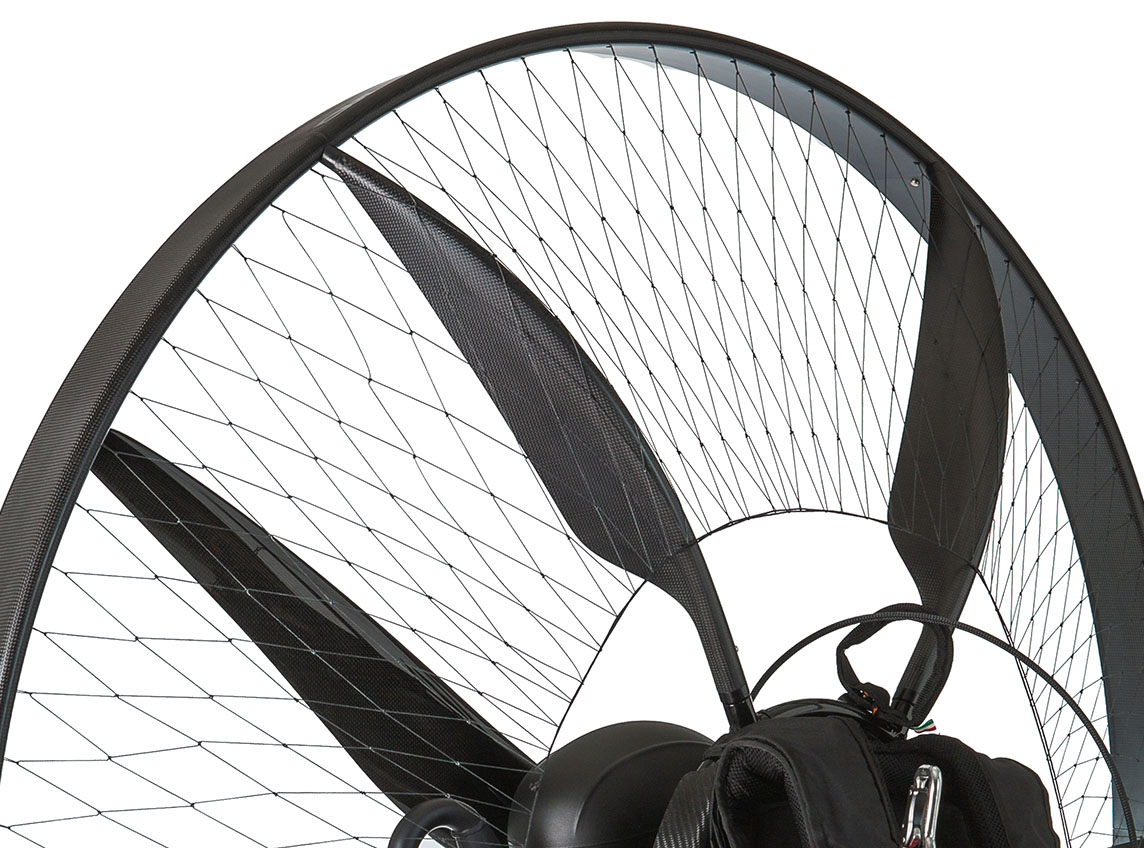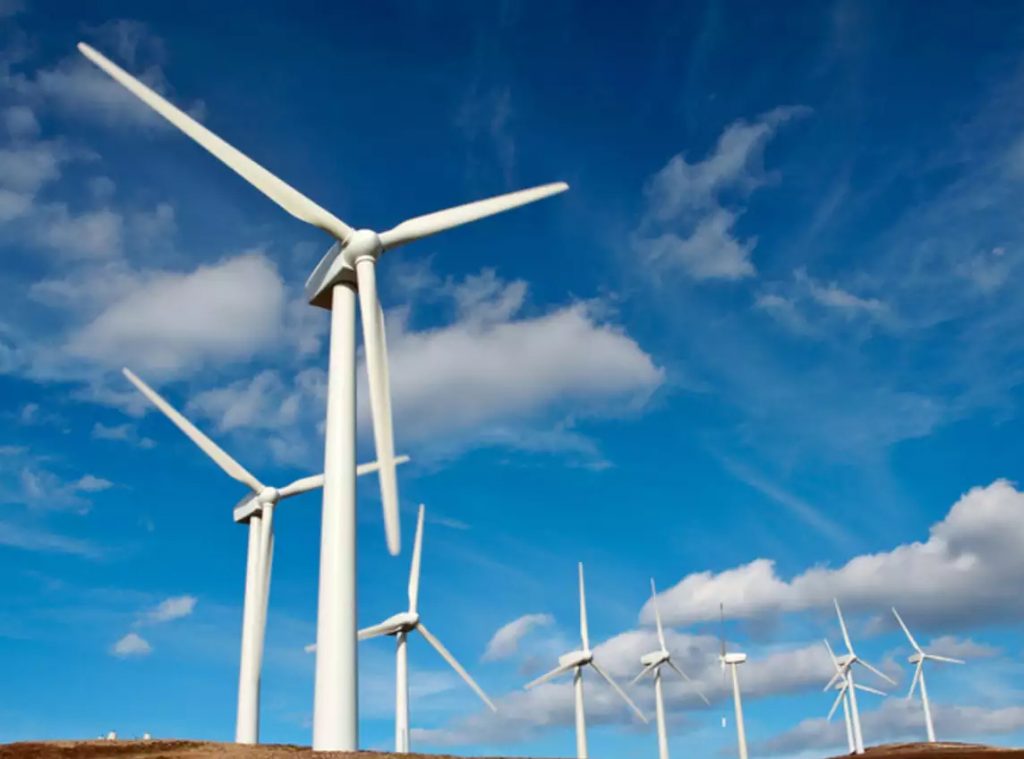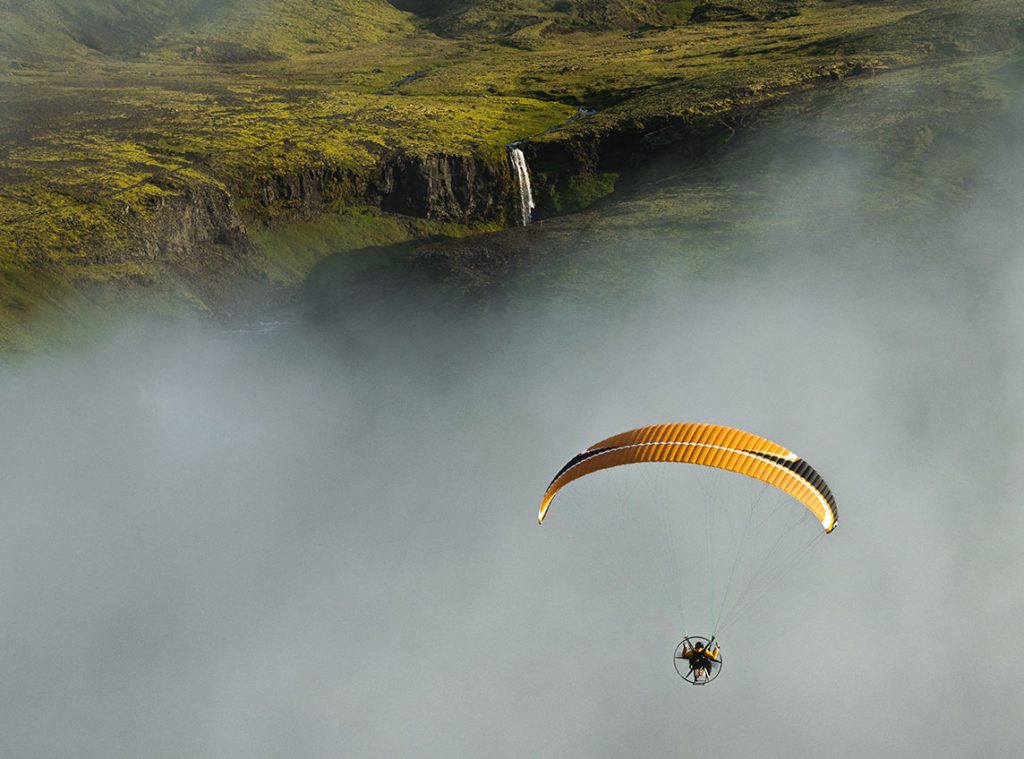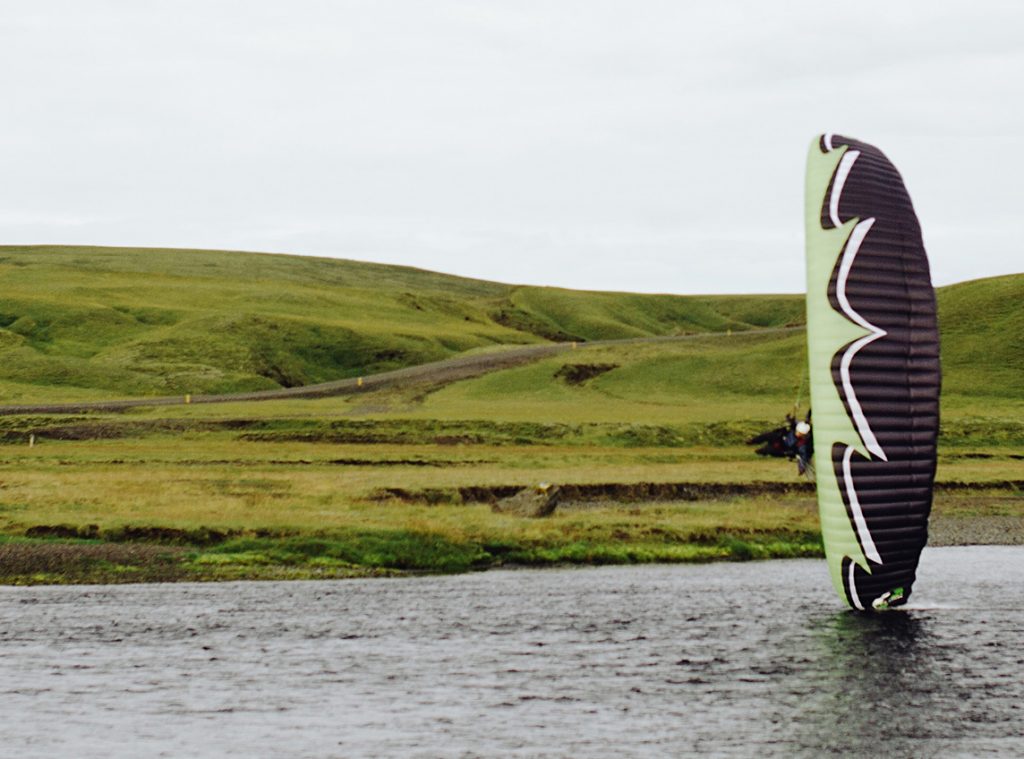Unique Dynamic Torque Compensation
Our main innovation is the unique dynamic torque compensation. It is the obvious difference between the SCOUT and other paramotors. Something you see at first sight and you feel on the first flight. This is a game-changing innovation.

How does Dynamic Torque Compensation work?
We use airfoil-shaped profiles on the cage. When air flows around them, these profiles act just like blades on a windmill. When torque turns the paramotor to the right then the Dynamic Torque Compensation will turn it back into position. Balanced.


Why do we call it Dynamic Torque Compensation?
Other paramotors use static torque compensation.
Static torque compensation means, that the compensating force or momentum is the same regardless of the torque. Carabiner offset or diagonal straps have the constant effect on torque compensation.
When more/full power is applied, torque increases but compensation stays the same. The glider will turn without pilot input.
The paraglider will turn to one side just as long as full power is used. The paraglider will only return to straight flight when the throttle comes down to level flight.
At a low RPM the the static compensation may be too much but at high RPM it won´t be enough.
The SCOUT is different
As more power is applied, torque increases dramatically.
The propeller creates stronger airflow and torque compensation increases.
1. More power => more torque
2. More power => more prop-generated airflow => more compensation.


The SCOUT flies straight.
Release the trimmers, push the speedbar to fly fast.
You will have to add power to maintain level flight. Torque increases by a square function of propeller speed. That means going from 5000 RPM to 6500 RPM will cause almost twice as much torque.
With the SCOUT torque will not be an issue. The prop generates enough airflow to compensate such dramatic torque increase.
No need to keep one hand on the brake all the time. In fact at full speed it works even better. Is that easy with Dynamic Torque Compensation!
The SCOUT loves tight turns.
You´re going to love them too!
In fact most SCOUT pilots hardly ever fly straight.
In fact torque is your biggest enemy on a non-straight flight except in tight turns. Torque helps to make tight turns to one side and makes it more difficult to turn to the opposite.
See Javi Malaguita as our team pilot touching the ground with the tip on the anti-torque side.

Paramotor torque experiment, First Time EVER!
In this video we are going to measure the torque! We honestly believe, that this is first time ever someone measuring the torque on paramotors! We have a very cool way how to measure it, so stay with us!
Watch a demonstration of the Dynamic Torque Compensation in flight
This video shows behavior of the SCOUT paramotor and the Dynamic Torque Compensation in action. The SCOUT flies differently from other paramotors.
Common paramotors fly straight at level flight if correctly designed. There should be no tendency to turn. If, however, the pilots squeezes the throttle to full power then the torque effect becomes stronger than compensation and the paraglider starts immediately roll to one side due to torque. The paraglider will turn to one side just as long the full power used. The paraglider will (without pilot’s input) only return to straight flight when the throttle comes down to level flight.
